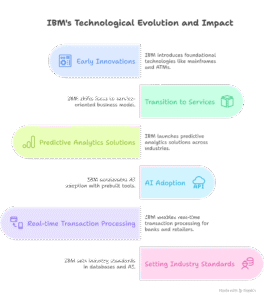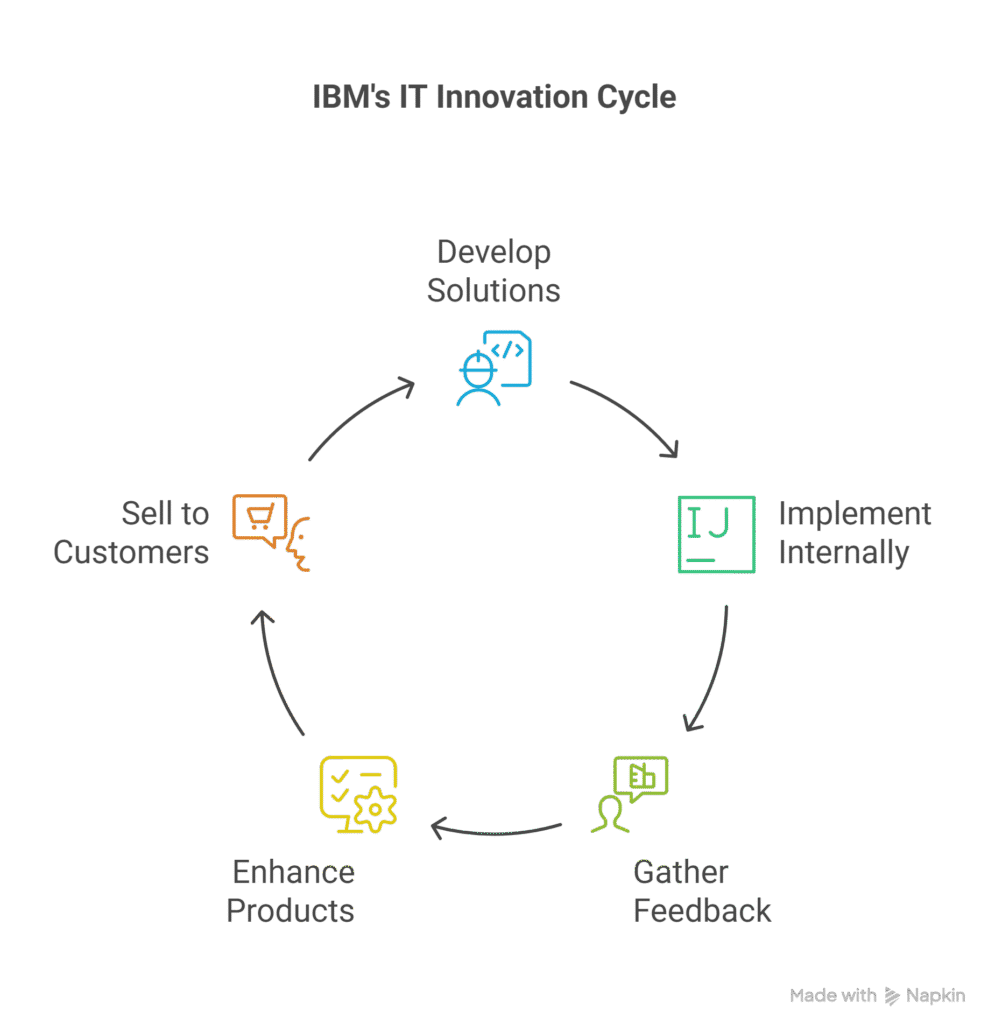IBM’s roots trace back to June 1911, when Charles Ranlett Flint merged three companies- the International Time Recording Company, Computing Scale Company, and Tabulating Machine Company- to form the Computer-Tabulating-Recording Company (CTR). Flint recognized the shared focus on information and data across these firms, setting the stage for IBM’s future through the company’s origins.
In 1915, Flint appointed Charles Watson as leader, and by 1924, CTR had become IBM, as detailed in IBM’s first 100 years: A heavily illustrated timeline. IBM’s punch card technology revolutionized data processing, saving the US Census millions of dollars and years of work, then supporting the Social Security Administration and the war effort. The company’s partnership with Harvard in 1944 led to the Automated Sequencing Machine, its first computer.
IBM continued to innovate, introducing the first commercial hard disk drive in 1956 and, in 1980, partnered with Microsoft to launch the IBM 5150 personal computer, which brought computing to the masses.
In 1991, IBM pivoted from hardware to services, a strategic shift that saw its services revenue soar from $6 billion to $56 billion by 2010. The 2010s saw further transformation, with investments in cloud computing and AI, and the iconic victory of IBM’s Watson on Jeopardy. Learn more about IBM’s ongoing innovation and adaptability.

IBM Today: A Powerhouse in Hybrid Cloud and AI
IBM now delivers a broad portfolio, including software, consulting, infrastructure, and financing. Its two flagship platforms, Watsonx for AI and Red Hat OpenShift for hybrid cloud, position IBM to capitalize on surging demand for these technologies.
Major competitors include Alphabet, Cisco, Microsoft, Amazon, Oracle, Salesforce, and Hewlett-Packard. IBM’s revenue streams include software solutions for data, automation, security, consulting, and infrastructure services. In 2024, under CEO Arvind Krishna, IBM generated $62.8 billion in revenue, invested $7 billion in research, and returned $6 billion to shareholders. For a deeper dive into IBM’s latest financials and leadership strategy, see the IBM 2024 Annual Report.
Krishna emphasizes IBM Research’s mission to invent what’s next across hardware, software, hybrid cloud, AI, and quantum computing, driving value for clients and growth for the company. IBM’s 29 consecutive years of dividend increases and $100 billion in shareholder value from 2022 to 2024 underscore its financial strength and commitment to innovation.
The Role of IT in IBM’s Business Model
Since its foundation, IBM has placed IT, information, and data at the heart of its business. The 1991 transformation into a service company marked a shift from hardware to IT thought leadership, with significant investments in research and development. IBM’s philosophy is simple: “We sell what we use, and we use what we sell,” a testament to its commitment to leveraging its own technology for client solutions, as explained by IBM executive advisor Louis Labelle.
With over 150,000 patents- 9,130 patents in 2020 alone– IBM remains at the forefront of technological advancement.
IBM’s Impact on Business Operations
IBM’s innovations have become foundational to modern business operations. IBM’s technologies are deeply embedded in business infrastructure, from mainframes and ATMs to floppy disks, hard drives, magnetic strip cards, relational databases, and SQL development. Its transition to a service-oriented company has also made it a leader in consulting, generating $17.6 billion from these services, as outlined in IBM’s business model analysis.
In 2015, IBM introduced 20 predictive analytics solutions across 12 industries, leveraging data from 50,000 client engagements to deliver out-of-the-box AI and analytics tools. This approach accelerates AI adoption for clients, providing prebuilt dashboards and applications that simplify data-driven decision-making.
IBM’s influence extends from enabling real-time transaction processing for banks and retailers to setting industry standards in databases and AI. Its impact on business and technology is so profound that it’s hard to imagine the modern world without IBM’s contributions.

Major Innovations and Lessons Learned
IBM’s legacy is marked by groundbreaking innovations: the punch card, mainframe, personal computer, and its strategic pivots into services, hybrid cloud, and AI. However, not all moves have been wins. The Microsoft deal, which sidelined IBM’s OS/2 and outsourced microprocessors to Intel, created the IBM-compatible PC market, costing IBM billions in the 1990s. Reliance on mainframe revenue also hurt as the market shifted toward business PCs.
Yet, IBM’s culture of “THINK” enabled it to adapt, expanding into consulting, hybrid cloud, AI, and quantum computing, ensuring its continued relevance.

The Future: Quantum Computing and Beyond
Looking ahead, IBM is investing heavily in Red Hat Linux for hybrid cloud leadership and Watsonx as its AI flagship, focusing on generative AI and large language models. The company faces fierce competition from Amazon AWS, Microsoft Azure, OpenAI, Google, Anthropic, and Meta in AI.
IBM is also a global leader in quantum computing, with its IBM Quantum Platform and a commitment to developing a quantum-safe world. Through the IBM Quantum Network, it’s building a global ecosystem of businesses, researchers, and universities, ensuring its leadership in this transformative field.
Conclusion: IBM’s Enduring Relevance in IT
IBM’s 113-year journey exemplifies how a company can remain at the forefront by continuously adapting and innovating. Its research investments, strategic pivots, and relentless focus on client value have built a foundation for sustained growth. While competition in cloud and AI is intense, IBM’s leadership in quantum computing positions it for another century of impact.
As management scholars note, the real challenge for today’s leaders is not just understanding technology, but leveraging information systems to drive business strategy and create value. IBM’s ongoing innovations are a testament to this principle, ensuring its influence on the IT industry for years.
Explore IBM’s official company history, review the latest annual reports, or discover IBM’s quantum computing initiatives for more insights.


